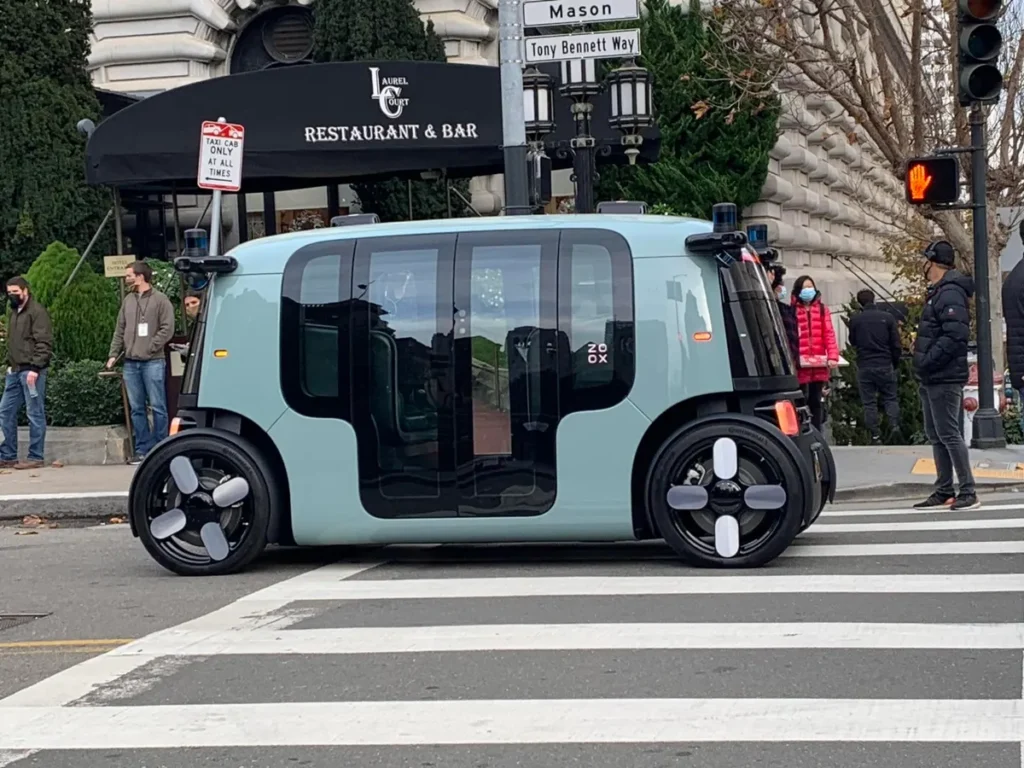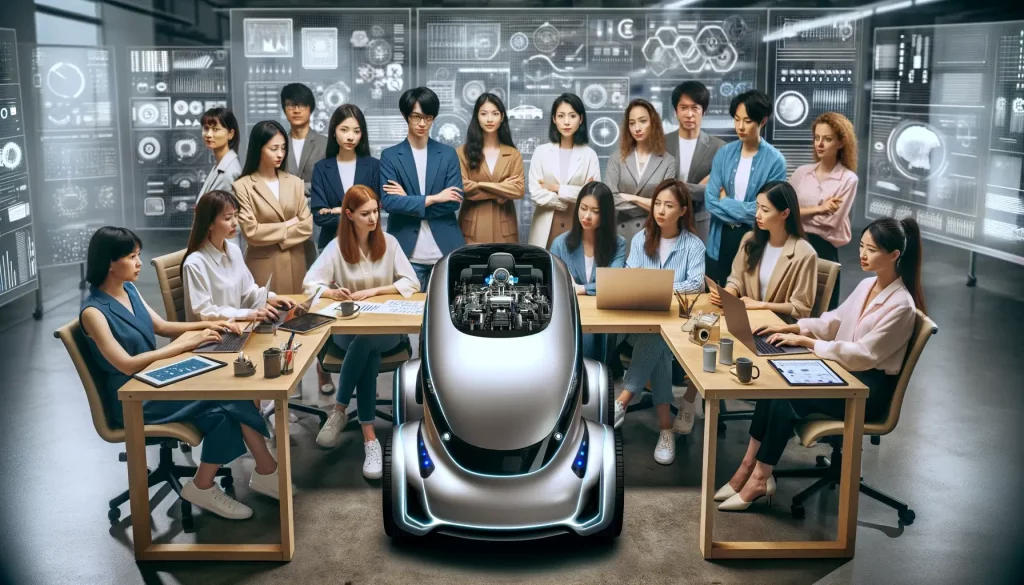Have you heard about the latest Taiwan self driving Gharry, but don’t have a detailed idea about them don’t worry! Here I am with a detailed and informative guide on Taiwan Self driving Gharry. As the tech world is blossoming, this new invention by Taipei, the capital city of Taiwan has globally surfed in the news. This Taiwan self driving Gharry shows how creative blend of technology with this traditional transport service.
After reading about this impressive invention, I hope you are looking forward to knowing more details about this Taipei self driving Gharry. Don’t worry! This blog ends your thirst for information here. I have gathered all the essential details about this Autonomous Gharry in this blog.
What is a Gharry?

Gharry is a traditional open-air carriage that was pulled by horses or mules. Garry originally came from a British word for a horse-drawn carriage which was first used in colonial India. Gharris were used for transportation and were often seen as a symbol of elegance and status. They typically had two wheels and were pulled by one or more horses. Gharris have largely been replaced by modern modes of transportation, but they still hold cultural and traditional significance in some areas and are sometimes used for ceremonial or tourist purposes.
Technology Behind Taiwan Self Driving Gharry

Taiwan Self Driving Gharry has many astonishing and impressive key features that you should know about before going any further. I have mentioned all the key characteristics in a detailed manner below:
- Autonomy: This traditional Taipei self driving Gharry has specialized autonomy features. It comprises the latest sensors. Advanced cameras and the latest fully enabled computer programs help in the uninterrupted intervention of the autonomous Garry.
- Electric Power: Electric power is the key aspect as it provides the energy that further leads to emission-free mobility.
- Passenger Capacity: The other key aspect is the passenger capacity in the Taipei self driving Gharry. On average, it holds 3 adult passengers along with a luggage holding capacity that is very genuine for affordable shared transportation.
- Accessible Design: Taiwan self driving Garry with accessible design means that it is accessible for all groups of ages. Non-slippery and low floors make it very easy and comfortable for the passengers.
- Tracking Technology: Taipei self driving Garry helps you to keep track of your journey and the distance that is left to reach your destination.
- Connectivity: It has the latest 5G technology which provides smooth monitoring control and uninterrupted software updates.
Online Booking of Taiwan Self Driving Gharry

You will be glad and thrilled to know that there is a facility to book an online ride for Taipei seld-driving Gharry. The “Gharry” app has been introduced, by which you can book pocket-friendly, eco-friendly rides for yourself and your friends. If you are wondering how to do so, well I am here to guide you. It is very simple as the app’s interface is very user-friendly. Here are the steps given below:
1. Request a ride – the very first step that you need to take is to put in the pickup and drop-off address in the nearest Garry.
2. Track your ride – See your gharry arriving in real-time on an interactive map.
3. Pay seamlessly – There is a Built-in digital payment method like a wallet and UPI that handles fare payments conveniently.
4. Provide feedback – There is a feedback feature that allows you to rate your experience and suggest improvements.
After knowing all this, make a note that fare calculations are based on the distance traveled and the number of passengers to ensure good and pocket-friendly value for individuals and families. Reliable service and appropriate fair pricing aim to make Gharries people’s first choice for local trips.
Benefits of Taipei Self Driving Gharry

Now after knowing all the above-mentioned information, you should know about the benefits of Taipei self driving gharry. The concept of a Taipei self driving Gharry could offer several potential benefits. Some of them are here mentioned below:
1. Reduced Traffic Congestion: Taiwan Self driving Gharris could potentially optimize routes and reduce congestion by leveraging real-time traffic data and efficient navigation algorithms. This could lead to smoother traffic flow and shorter travel times for commuters.
2. Improved Safety: Self driving technology is designed to adhere strictly to traffic rules and regulations, potentially reducing the number of accidents caused by human error. With advanced sensor systems and rapid reaction times, Taipei self driving Gharris could help mitigate the risk of collisions and improve overall road safety.
3. Enhanced Accessibility: Taipei Self driving Gharry could provide a convenient and accessible mode of transportation for individuals who are unable to drive due to age, disability, or other reasons. This could improve mobility options for a broader segment of the population, including the elderly and people with disabilities.
4. Environmental Benefits: By optimizing routes and reducing traffic congestion, Taiwan’s self driving Gharry could contribute to lower emissions and improved air quality in urban areas. Additionally, if these vehicles are electric or hybrid-powered, they could further reduce the carbon footprint associated with transportation.
5. Efficient Land Use: Gharris are typically smaller and more maneuverable than traditional vehicles, allowing them to navigate through narrow streets and congested areas more easily. Taiwan’s self driving Gharry could help optimize urban space by reducing the need for large parking lots and freeing up valuable real estate for other purposes.
6. Economic Opportunities: The development and arrival of self driving Gharris could create new economic opportunities in Taipei, including jobs in manufacturing, technology development, maintenance, and service provision. Additionally, a more efficient transportation system could boost productivity and stimulate economic growth in the region.
7. Tourism and Cultural Value: Gharris have historical and cultural significance in many regions of Taiwan, including Taipei. Introducing self driving Gharris could attract tourists from all over the world interested in experiencing traditional modes of transportation while also showcasing Taiwan’s technological innovation and forward-thinking approach to urban mobility.
From an overall point of view, the implementation of self driving Gharris in Taipei has the potential to revolutionize urban transportation, providing a safer, more efficient, and more accessible mobility solution for residents and visitors alike.
Safety Measures of Taiwan Self Driving Gharry

In all of this technical innovation, the Taipei self driving Garry top tier priority is the safety concerns. As the vehicle gets digitalized, cyber security threats become more evident and crucial. The two major and highlighted threats are here mentioned below:
- Hackers: As the complete functioning of the Taipei self driving Gharry depends on the technical connectivity and the digitalization of the vehicle, it is a very common threat that it could be hacked. The biggest threat at present the autonomous Garry can face is the issue of unauthorized access control. It may later lead to any sort of minor or major physical injury to the passenger.
Solution: To deal with this situation various defense levels have been built. There are proper location records, passenger records, and sensor inputs. Everything has full encryption and safeguard controls. Additional and frequent scans are helpful in proactively detecting weaknesses and threats. - Public Safety Concerns: Public safety concerns include such scenarios where collisions and situational unfortunate incidents may occur to which passengers have no control.
Solution: To deal with this problem, there are features that passengers can use in emergencies. They are known as emergency systems and collision avoidance systems. Also, there are such algorithm settings that proactively predict accidents and collisions. It informs the operating team beforehand and alerts them.
Public Review of Taipei Self Driving Gharry

Overall, Taiwanese attitudes toward self driving technology seem optimistic based on surveys. While many express concerns, open pilot programs may help address them:
- Top worries center around reliability, hacking risks, and how autonomous vehicles interact with unpredictable human drivers and road conditions.
- Once they understand autonomous capabilities and limitations, around 65% say they would feel comfortable riding in a self driving vehicle if given the choice.
- Over 75% believe autonomous transport could be safer than human-operated cars once the technology matures by reducing accidents from human error or impairment.
- Convenience attracts many over 80% said they would use autonomous taxis, buses, or trains if available, especially those with disabilities.
- Affordability also ranks highly 60% would regularly adopt self driving public transport to save money versus owning private vehicles in dense cities.
- Around 70% support pilot programs to demonstrate progress toward addressing current doubts and familiarizing more people hands-on. Regular transparent progress reports, open community engagement sessions, and safe early pilots seem to be an ideal way to continue gaining public trust in autonomous technology for Taiwan’s long-term transportation needs and sustainability goals. The Gharry program presents a prime opportunity
Wrapping Up
So after reading this blog, I hope all your doubts and queries related to the Taiwan self driving Garry. If you still have any queries, you can reach out to us on our website Moneytech Insiders and we will get back to you soon. To read more such descriptive and interesting articles, keep visiting our website. Have a good day ahead.

Meet Ujjwal, a passionate empath with a dynamic ambivert personality. Grounded in a dual passion for psychology and English literature, her academic pursuits mirror the essence of her being. With a keen aptitude for analysis and research, she now graces the platform of Moneytech Insiders as a distinguished blogger, ready to share her insights with the world.

